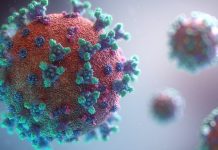
There are many things that no one has yet thoroughly or scientifically explained about the current pandemic, including why there are fewer infections in Asia and Africa and also fewer deaths. There is no proper explanation of why India, which is considered poor, dirty, unhygienic, corrupt, and disorganized, has suffered relatively fewer infections per million population than the so-called developed and ‘organized’ countries such as the USA, UK, Italy, Belgium, France, Spain or Germany.
India is not the only one that has done relatively well on this count. In fact, Vietnam, Bangladesh, and Pakistan have done much better than India. The numbers are there – but generally related on TV and in newspaper articles with a slight twist that veers toward some stereotypical angle. These slight mistruths are typically cloaked in well-meaning concern even when in denial of the incompetence and venal politics of the pandemic in the US or the UK. Or of its total mismanagement and mixed messaging in the European Union. The numbers are available on worldometer.com and other sources since some countries manage to obscure their data better than others.
Vaccine chauvinism
There is also the talk of vaccine chauvinism and vaccine politics, not to mention vaccine economics. It is clear to us in India that despite having a government that spends 1.26% of its GDP on health, there are many aspects of our health care industry that are serviceable and downright excellent. In the middle of 2020, a senior journalist told us not to despair or underestimate the vast network of health workers across the country engaged in various public health programs. Apart from child and mother welfare, they bring to the current pandemic a legacy of block-level engagement and vaccination campaigns. Even the cold chain in India is far more potent than most of us are aware of – apart from its use for vaccines, extremely cold bio-logistics are used for animal husbandry.
Although there is some corruption in state and public health institutions, it is easily outweighed by the collective and individual experience, brilliance, and fortitude of the medical personnel. Its doctors and nurses have been instrumental in saving countless lives. Perhaps they are far more independent and creative in their thinking about medical procedures than in countries where medical practice is mediated by a combination of rigid guidelines meant to be immune to malpractice suits and nurtured by insurance companies.
Doctors in India are more powerful and more effective than in regions where medicine is an industry dominated by insurance companies and big pharma. Of course, many quacks also operate in the country with impunity and harm patients with little recourse to the courts. However, there is no shortage of unscrupulous charlatans in countries like the United States, where doctors collaborate with pharma firms and knowingly prescribe opioids to vulnerable sections of the population, causing untold overdose deaths.
Vaccine nationalism and stereotypical hypocrisy
Although India has the second-largest capacity to manufacture vaccines after the US, it does have the single largest manufacturer. It may better utilize this capability and manufacture more than any other country. It should be noted that even by November of 2020, India had ordered 1.6 billion vaccine candidate doses, the biggest commitment of any government. And thus far, its vaccine roll-out is among the fastest globally, although with a population of 1.37 billion, it has only thus far injected about 85 million doses as of 6 April. It is the only country where there is no shortage (thus far) of the Covid-19 vaccine partly because it has the largest manufacturer, the privately-owned Serum Institute of India, based in Pune.
As of 17 March 2021, the Indian vaccine manufacturers (primarily Serum Institute of India) had exported 58.4 million doses to 70 countries compared to the 34.8 million doses administered to its citizens. The global media that occasionally acknowledges the Serum Institute’s contribution nevertheless displays a mixture of denial and vehement stereotyping when describing the pandemic in India and its health and pharmaceutical capabilities.
In an article in The Guardian on 2 April 2021, Achal Prabhala and Leena Menghaney point to several anomalies in the politicized and somewhat self-righteous discussion of the Covid-19 vaccine and its manufacture, licensing, and distribution. I take the liberty of quoting them at length – “It’s somewhat rich for figures in Britain to accuse India of vaccine nationalism. That the UK, which has vaccinated nearly 50% of its adults with at least one dose, should demand vaccines from India, which has only vaccinated 3% of its people so far, is immoral. That the UK has already received several million doses from India, alongside other rich countries such as Saudi Arabia and Canada, is a travesty.
“The billions of AstraZeneca doses being produced by the Serum Institute in India are not for rich countries – and, in fact, not even for India alone: they are for all 92 of the poorest countries in the world. . . .”
The Prabhala-Menghany article is excellent, although I believe The Guardian prejudicially titled it. You can read it for yourself (https://bit.ly/31MZ6gK). The article goes on to say, “How did we get here? Exactly one year ago, researchers at Oxford University’s Jenner Institute, frontrunners in the race to develop a coronavirus vaccine, stated that they intended to allow any manufacturer, anywhere, the rights to their jab. One of the early licences they signed was with the Serum Institute, the world’s largest vaccine manufacturer. One month later, acting on advice from the Gates Foundation, Oxford changed course and signed over exclusive rights to AstraZeneca, a UK-based multinational pharmaceutical group.
“AstraZeneca and Serum signed a new deal. Serum would produce vaccines for all poor countries eligible for assistance by Gavi, the Vaccines Alliance – an organisation backed by rich countries’ governments and the Gates Foundation. These 92 nations together counted for half the world – or nearly four billion people. India’s fair share of these vaccines, by population, should have been 35%. However, there was an unwritten arrangement that Serum would earmark 50% of its supply for domestic use and 50% for export.
“The deal included a clause that allowed AstraZeneca to approve exports to countries not listed in the agreement. Some countries which asked for emergency vaccine shipments from Serum, including South Africa and Brazil, were justified: they had nothing else. Rich countries like the UK and Canada, however, which had bought up more doses than required to vaccinate their people, to the detriment of everyone else, had no moral right to dip into a pool of vaccines designated for poor countries.
“Paradoxically, when South Africa and India asked the World Trade Organization to temporarily waive patents and other pharmaceutical monopolies so that vaccines could be manufactured more widely to prevent shortfalls in supply, among the first countries to object were the UK, Canada and Brazil. They were the very governments that would later be asking India to solve their own shortfalls in supply.
“The deal did not include restrictions on what price Serum could charge, despite AstraZeneca’s pledge to sell its vaccine for no profit “during the pandemic”, which led to Uganda, which is among the poorest countries on Earth, paying three times more than Europe for the same vaccine. (An AstraZeneca spokesperson told Politico that the ‘price of the vaccine will differ due to a number of factors, including the cost of manufacturing – which varies depending on the geographic region – and volumes requested by the countries.’)
“As it became clear that the western pharmaceutical industry could barely supply the west, let alone anywhere else, many countries turned to Chinese and Russian vaccines. Meanwhile, the Covax Facility – the Gavi-backed outfit that actually procures vaccines for poor countries – stuck to its guns and made deals exclusively with western vaccine manufacturers. From those deals, the AstraZeneca vaccine is now the only viable candidate it has. The bulk of the supply of this vaccine comes from Serum, and a smaller quantity from SK Bioscience in South Korea. As a result, a third of all humanity is now largely dependent on supplies of one vaccine from one company in India.”
The Covid-19 pandemic has exposed the flaws in all of us, and it and its health and economic ramifications are horrific. By and large Indian scientists, doctors, medical and government personnel, and even politicians have spoken scientifically. After some initial imitations of Trump, even our politicians have allowed the government machinery to work based on the facts known at any given time. Contrast this with gobbledygook uttered by Donald Trump and Boris Johnson, who could have told the truth and avoided countless deaths in their own countries.
The day-to-day Covid-19 issues are complex enough, and it ain’t over yet. The pandemic’s political economy touches the raw nerves of profit in the making, distribution, and administration of the vaccine. It again brings up the intellectual property monopolies of big pharma, and unfortunately, on how much money and political glory can be gathered by some politicians.
It would be good to remember even now that Serum Institute, which is the largest vaccine manufacturer in the world, had a turnover in 2019 of US$ 840 million. In comparison, Pfizer had a turnover of over US$ 51.7 billion in that year. In this season, it may also be helpful to remember that while a rich man has as much chance of going to heaven as a camel through the eye of a needle, it may yet be the meek who will inherit the earth.








